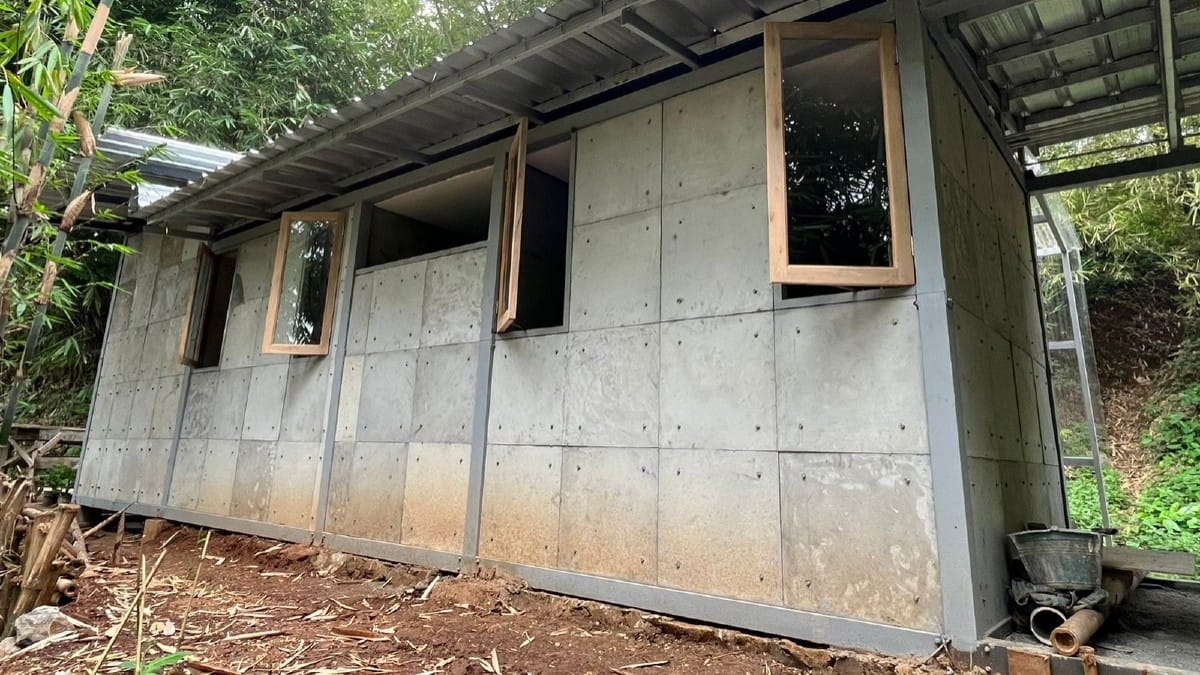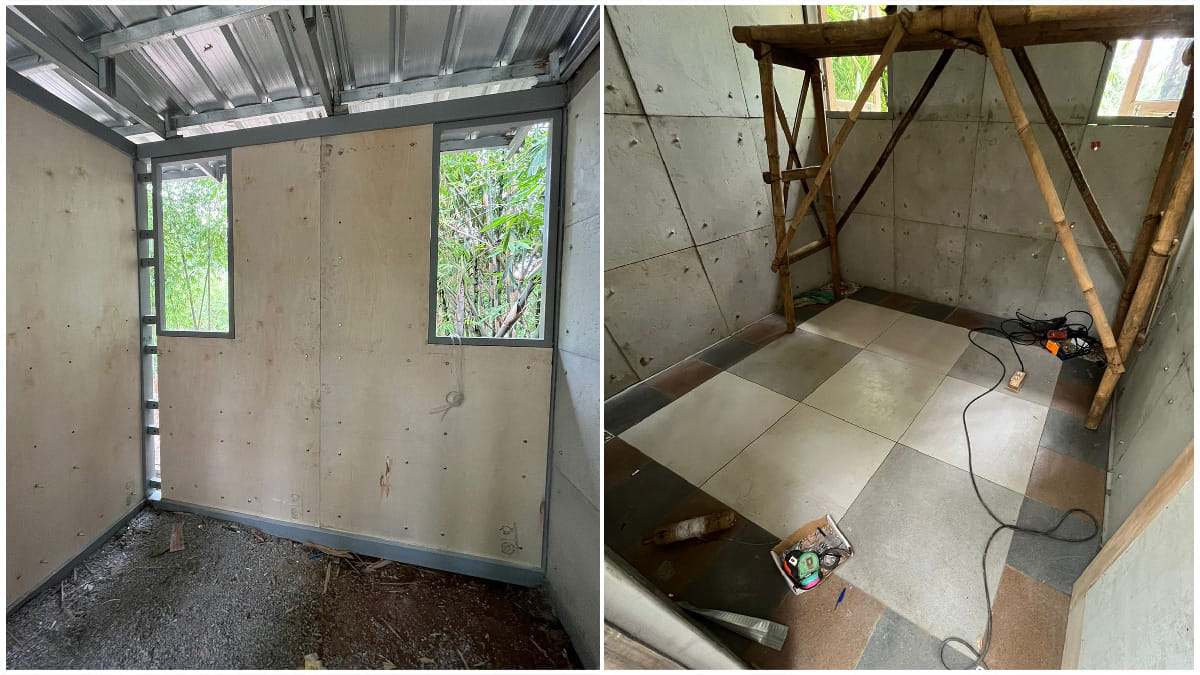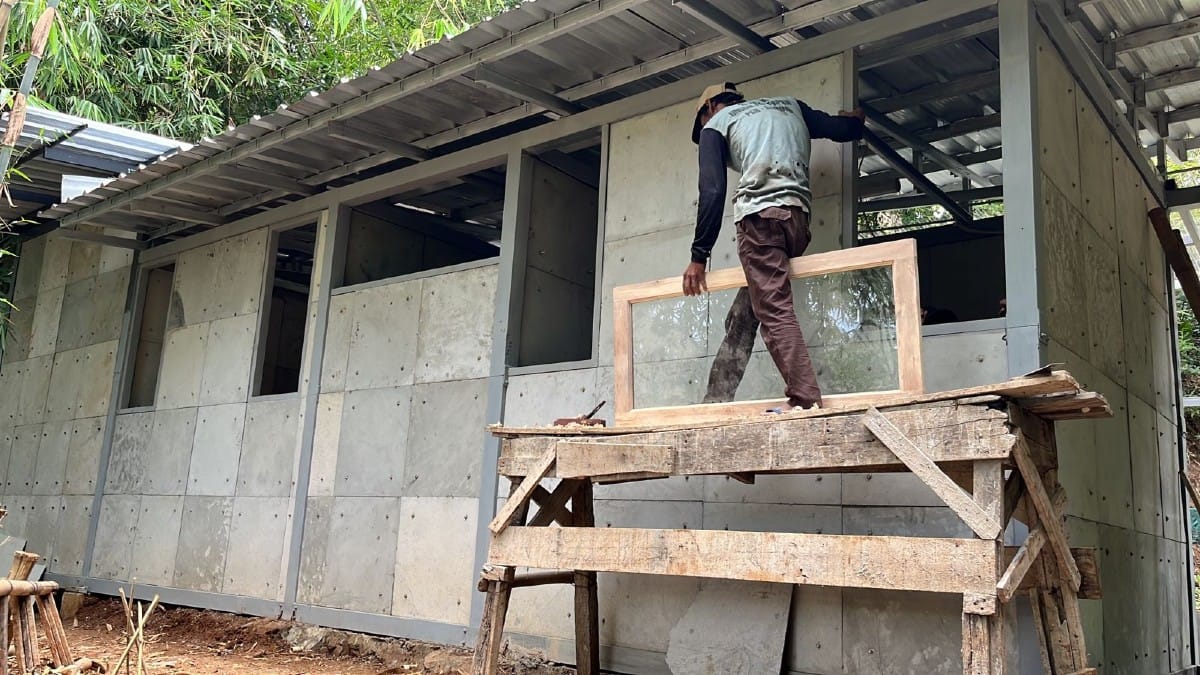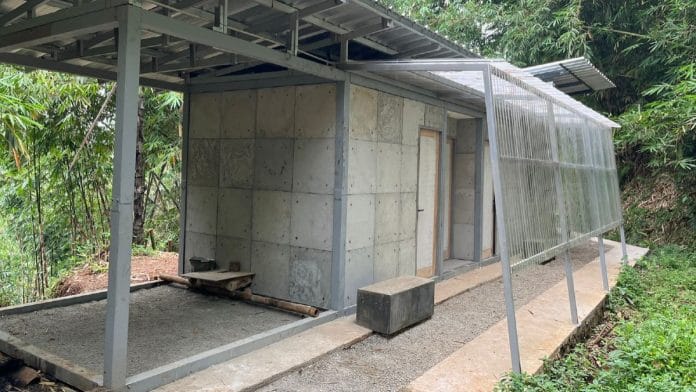New Delhi: To provide a new, cost-effective solution to housing in low- and middle-income countries, researchers in Japan have developed a prototype for a house made partially from used and shredded disposable diapers.
Siswanti Zuraida and her colleagues from the The University of Kitakyushu in Japan’s Fukuoka have found that up to 8 per cent of sand in all of the building materials used in a single-storey house can be replaced with disposable diapers, which amounts to roughly 1.7 cubic metres of waste material.
Their findings were published in peer-reviewed journal Nature on 18 May.

Disposable diapers are usually manufactured from materials such as wood pulp, cotton, viscose rayon, and plastics such as polyester, polyethylene, and polypropylene. These are usually disposed of in landfills or incinerated. Using this waste as building material is an ecologically benign technique that can promote waste recycling.
Without significantly diminishing the strength of the structure, the prototype can fit up to four people in a housing area of 36 square metres, with a land area of 60 square metres, and is based on Indonesian building standards. These comprise various requirements under the Standar Nasional Indonesia (SNI), which includes mortar specifications for building material and design procedures for concrete construction, among others.
The researchers found that waste diapers could replace up to 10 per cent of sand needed for concrete used in columns and beams in a three-storey house, about 40 per cent of sand needed for mortar in partition walls, and 9 per cent of sand needed in mortar for floors and garden paving.

“Building materials are often the single-most considerable tangible input into the construction of housing and can account for up to 80 per cent of the overall worth of a simple residential dwelling. It leads to the cost factor becoming the first barrier to sustainable construction,” they wrote.
With the growing needs of urbanisation and rampant migration, Indonesia is suffering from a housing crisis spurred by a large gap between supply and demand of housing. While there is a yearly demand of roughly 7,80,000 units of housing, only 4,00,000–5,00,000 units per year are available, they added.
“The high costs of two crucial inputs of land and building materials are a fundamental reason housing needs to be more attainable for the urban poor,” the researchers said.
Also Read: What 7,200-yr-old fibres from Indus Valley found in Israel tell us about cotton domestication
‘Cost-effective & environmentally friendly’
First, samples of concrete and mortar were prepared by combining washed, dried and shredded used diapers, with cement, sand, gravel and water.
They then tested six samples with different proportions of waste diapers mixed with building materials (cement, sand, gravel, water) to measure how much pressure they could withstand without breaking.
Regular concrete typically attains a strength of 24.91 MegaPascal (MPa), for mid-rise structures. The concrete mix design was initially supposed to achieve a maximum compressive strength of 25 MPa.
However, researchers found that as they substituted fine materials for diaper material, there was a weakening in structural strength. Which is why, they concluded that a replacement range between 0 and 10 per cent can achieve a strength between 20 and 25 MPa.

“Various building restrictions and standards prevent using building materials that are more appropriate and readily available in the local area. Additionally, these prevent the use of construction technologies that are both cost-effective and environmentally friendly,” the researchers added.
The team suggested that the recycling process for used diapers is “complicated” and requires sorting of plastic from organic fibres.
Diaper recycling is therefore, carried out only by developed countries, due to a lack of expertise and necessary equipment. They then suggested that combining waste with building materials is “easily applicable and feasible”.
The procedures involved in using this material are also relatively easy and low-cost.
However, there are several limitations to enabling a wider implementation of these results. Researchers noted that it would require the involvement of various stakeholders in government and waste treatment.
Moreover, building regulations would need to be modified to allow the use of waste diaper as a construction material.
(Edited by Amrtansh Arora)
Also Read: This is how I found a way to detect microplastics in water. And PM Modi gave me an award






